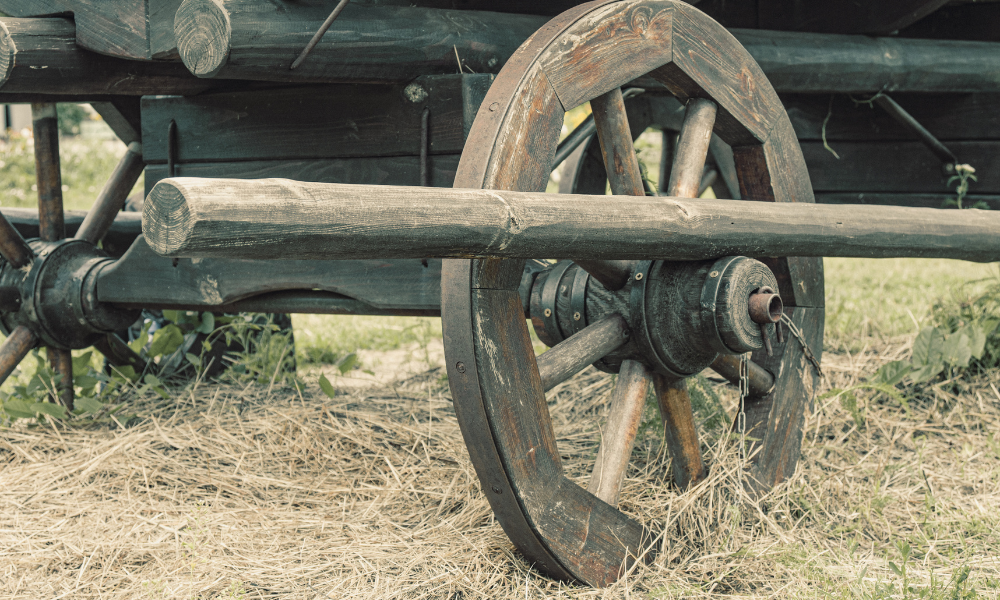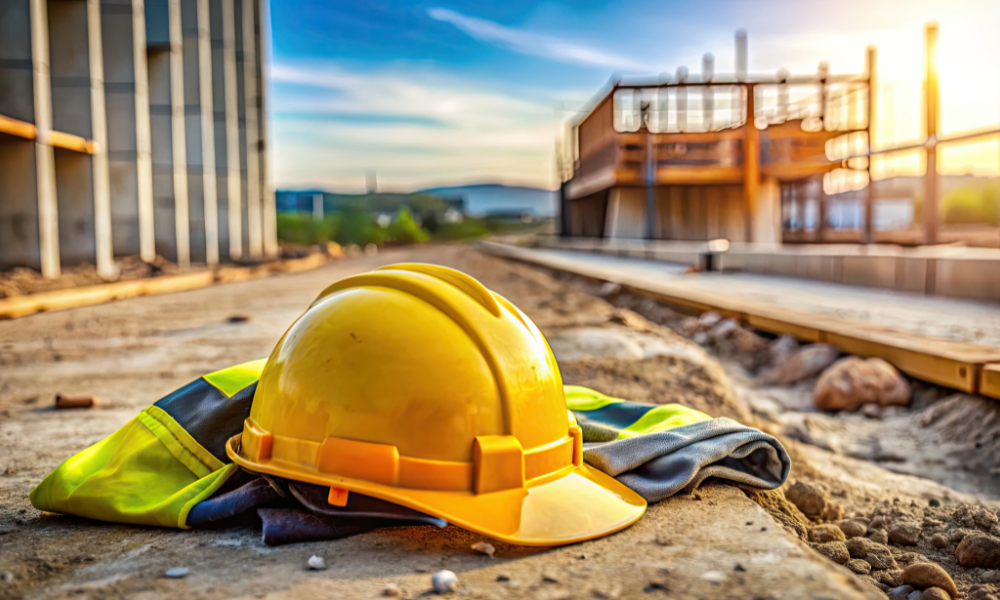
Recent statistics from WorkSafeBC indicate that while the number of workplace injuries among male workers is on a decline, the statistics for women workers are not quite as positive.
No matter how safe you think your workplace is, if you’re a woman, you need to be much more vigilant about being injured on the job, a recent report on occupational injuries suggests.
A report from WorkSafeBC shows that while the rate of injury to men at work declined substantially over the last decade, the rate at which women were hurt stayed the same.
As a result, women now account for 36 per cent of the total loss-work claims accepted by the B.C. workers’ compensation board.
“That’s the highest percentage of claims that we’ve ever had for women,” says Terry Bogyo, director of corporate planning.
“It may be that we’ve done a really good job of reducing the injury rate for males, and that’s good news. But when you look at the injury rates overall, the female injury rate has not come down substantially, as much as the other one has come down.”
According to the report, between 2001 and 2010, the rate of injury for men declined by 41 per cent while that for women declined by only 29 per cent. One reason for this, Bogyo says, is that a large number of women work in areas that, though generally considered safe, actually contain many safety hazards — health care, social sciences education and government.
He notes that, of all sectors of the economy, the highest number of injuries on claims that the board paid last year was in health care.
“If you asked someone to guess the industry that causes the most injuries in British Columbia, I think a lot of people would say forestry. You might not think it was health care,” he says. “It may be that we said hospital work and office work aren’t that risky and that we’re not paying as much attention to it as a society as we ought to.”
Health care hazard
Women make up 79 per cent of health care workers and account for 85 per cent of all injuries in the sector. Many of these injuries are strains and sprains, and broken bones from falls . This makes sense, Bogyo says, when you think that hospital workers must often lift patients from one place to another and that, as they age, women develop osteoporosis, so injuries and falls take a greater toll on them.
As well, he adds, hospital work has become more strenuous in recent years. Wards were once filled with patients suffering from a range of problems. Now an increasing number of them are treated in day clinics and at home.
“That means that the hospital is being reserved for more of the most disabled people so that the average ability of the patient you are treating has declined. So in some respects the demands on workers in that environment have increased,” Bogyo says.
And because many women go into health care because they want to relieve suffering in others, they may put helping a patient before concern for their own safety. For their part, many hospitals cannot afford ceiling lifts, which would reduce the risk of injury. Both staff and hospital management need to be more aware of the possibility of injury, Bogyo says.
Women’s predominance in healthcare, along with their susceptibility to osteoporosis and loss of upper body strength, also helps to explain why, as the report shows, injuries to women increase with age — the opposite of the rate for men, who suffer fewer injuries as they get older.
According to the report, women are also injured at disproportionate rates in management (percentage of injuries to women — 44; percentage of women in the occupation — 36) and in social sciences, education, government service and religion (75 per cent; 66 per cent).
Across industries and occupations, the economic downturn has also played a major role in increasing injuries to women, says Terrie Norris, president of the American Society of Safety Engineers. That’s in part because the number of women in the workforce relative to men has increased. In bad times, bosses tend to prefer women employees, who are paid less. In the United States, for example, more women than men now have jobs.
But high unemployment among men also means women are less likely to complain about unsafe conditions or refuse to perform dangerous tasks.
“If you know that there’s a second income and you can say, ‘Take this job and shove it,’ you do so,” she says. “But if you’re the only one that’s bringing home the money that’s just barely getting ends to wave at each other, you’re probably not going to complain. You’re going to keep working while you’re uncomfortable or in pain.”
Women also sustain more injuries than men because they do more shift work, a type of work that causes sleep deprivation, Bogyo says. Over time, fatigue builds and a worker’s judgment becomes impaired.
“And certain types of shifts — rapidly rotating shifts, short shifts — where you’re having a short night’s sleep and then you’re back on the job can increase errors,” he says.
Biomechanics
Differences in body structure may also help to account for the high injury rate among women, says Martha Bidez, an engineering professor at the University of Alabama at Birmingham. Women’s bone geometry — how the bones and muscles are put together — gives them a lower tolerance to injury.
“It’s the actual size and shape of the bones that put us at a higher risk. Also, the angle that our femur (the thigh bone) makes with our pelvis — the Q-angle — is very different in a woman than in a man, and as such, for the same type of force, the impact on a joint is higher for women versus men,” she says.
Because the Q-angle is larger in women, the muscles acting over the joints impart higher stress to the knee and hip joints, which can lead to chronic pain, Bidez says. The difference also helps explain why women have a higher incidence of falling than men.
Our greater understanding of the role that biomechanics plays in women’s injuries, she adds, means that employers need to be more aware of the hazards of falls.
“It’s not that certain women shouldn’t work in a given profession, but it does call to light some opportunities for design intervention that would benefit both men and women,” she says.
Work is increasingly affecting women’s health in ways other than on-the-job injuries, Norris says. Medical studies show that more women are dying of heart attacks, partly because of stress arising from the new roles they are playing in the business world.
“We’re going up the ladder and experiencing some stresses that may not have been in our lives before,” she says, adding many women don’t recognize the symptoms of heart problems, which are different from men, when they experience them.
Workplace injuries take a huge toll, Bogyo says. On average, a worker, whether male or female, is off work 60 days for recovery.
“That’s a huge impact on you and on your family,” he says, adding the 60-day average means workers are still suffering a high number of very serious injuries. “A substantial number of women are being injured, and they’re accounting for 36 per cent of our claims. It’s a bit of a wake-up call, that the risks are there,” he says.
No matter how safe you think your workplace is, if you’re a woman, you need to be much more vigilant about being injured on the job, a recent report on occupational injuries suggests.
A report from WorkSafeBC shows that while the rate of injury to men at work declined substantially over the last decade, the rate at which women were hurt stayed the same.
As a result, women now account for 36 per cent of the total loss-work claims accepted by the B.C. workers’ compensation board.
“That’s the highest percentage of claims that we’ve ever had for women,” says Terry Bogyo, director of corporate planning.
“It may be that we’ve done a really good job of reducing the injury rate for males, and that’s good news. But when you look at the injury rates overall, the female injury rate has not come down substantially, as much as the other one has come down.”
According to the report, between 2001 and 2010, the rate of injury for men declined by 41 per cent while that for women declined by only 29 per cent. One reason for this, Bogyo says, is that a large number of women work in areas that, though generally considered safe, actually contain many safety hazards — health care, social sciences education and government.
He notes that, of all sectors of the economy, the highest number of injuries on claims that the board paid last year was in health care.
“If you asked someone to guess the industry that causes the most injuries in British Columbia, I think a lot of people would say forestry. You might not think it was health care,” he says. “It may be that we said hospital work and office work aren’t that risky and that we’re not paying as much attention to it as a society as we ought to.”
Health care hazard
Women make up 79 per cent of health care workers and account for 85 per cent of all injuries in the sector. Many of these injuries are strains and sprains, and broken bones from falls . This makes sense, Bogyo says, when you think that hospital workers must often lift patients from one place to another and that, as they age, women develop osteoporosis, so injuries and falls take a greater toll on them.
As well, he adds, hospital work has become more strenuous in recent years. Wards were once filled with patients suffering from a range of problems. Now an increasing number of them are treated in day clinics and at home.
“That means that the hospital is being reserved for more of the most disabled people so that the average ability of the patient you are treating has declined. So in some respects the demands on workers in that environment have increased,” Bogyo says.
And because many women go into health care because they want to relieve suffering in others, they may put helping a patient before concern for their own safety. For their part, many hospitals cannot afford ceiling lifts, which would reduce the risk of injury. Both staff and hospital management need to be more aware of the possibility of injury, Bogyo says.
Women’s predominance in healthcare, along with their susceptibility to osteoporosis and loss of upper body strength, also helps to explain why, as the report shows, injuries to women increase with age — the opposite of the rate for men, who suffer fewer injuries as they get older.
According to the report, women are also injured at disproportionate rates in management (percentage of injuries to women — 44; percentage of women in the occupation — 36) and in social sciences, education, government service and religion (75 per cent; 66 per cent).
Across industries and occupations, the economic downturn has also played a major role in increasing injuries to women, says Terrie Norris, president of the American Society of Safety Engineers. That’s in part because the number of women in the workforce relative to men has increased. In bad times, bosses tend to prefer women employees, who are paid less. In the United States, for example, more women than men now have jobs.
But high unemployment among men also means women are less likely to complain about unsafe conditions or refuse to perform dangerous tasks.
“If you know that there’s a second income and you can say, ‘Take this job and shove it,’ you do so,” she says. “But if you’re the only one that’s bringing home the money that’s just barely getting ends to wave at each other, you’re probably not going to complain. You’re going to keep working while you’re uncomfortable or in pain.”
Women also sustain more injuries than men because they do more shift work, a type of work that causes sleep deprivation, Bogyo says. Over time, fatigue builds and a worker’s judgment becomes impaired.
“And certain types of shifts — rapidly rotating shifts, short shifts — where you’re having a short night’s sleep and then you’re back on the job can increase errors,” he says.
Biomechanics
Differences in body structure may also help to account for the high injury rate among women, says Martha Bidez, an engineering professor at the University of Alabama at Birmingham. Women’s bone geometry — how the bones and muscles are put together — gives them a lower tolerance to injury.
“It’s the actual size and shape of the bones that put us at a higher risk. Also, the angle that our femur (the thigh bone) makes with our pelvis — the Q-angle — is very different in a woman than in a man, and as such, for the same type of force, the impact on a joint is higher for women versus men,” she says.
Because the Q-angle is larger in women, the muscles acting over the joints impart higher stress to the knee and hip joints, which can lead to chronic pain, Bidez says. The difference also helps explain why women have a higher incidence of falling than men.
Our greater understanding of the role that biomechanics plays in women’s injuries, she adds, means that employers need to be more aware of the hazards of falls.
“It’s not that certain women shouldn’t work in a given profession, but it does call to light some opportunities for design intervention that would benefit both men and women,” she says.
Work is increasingly affecting women’s health in ways other than on-the-job injuries, Norris says. Medical studies show that more women are dying of heart attacks, partly because of stress arising from the new roles they are playing in the business world.
“We’re going up the ladder and experiencing some stresses that may not have been in our lives before,” she says, adding many women don’t recognize the symptoms of heart problems, which are different from men, when they experience them.
Workplace injuries take a huge toll, Bogyo says. On average, a worker, whether male or female, is off work 60 days for recovery.
“That’s a huge impact on you and on your family,” he says, adding the 60-day average means workers are still suffering a high number of very serious injuries. “A substantial number of women are being injured, and they’re accounting for 36 per cent of our claims. It’s a bit of a wake-up call, that the risks are there,” he says.





